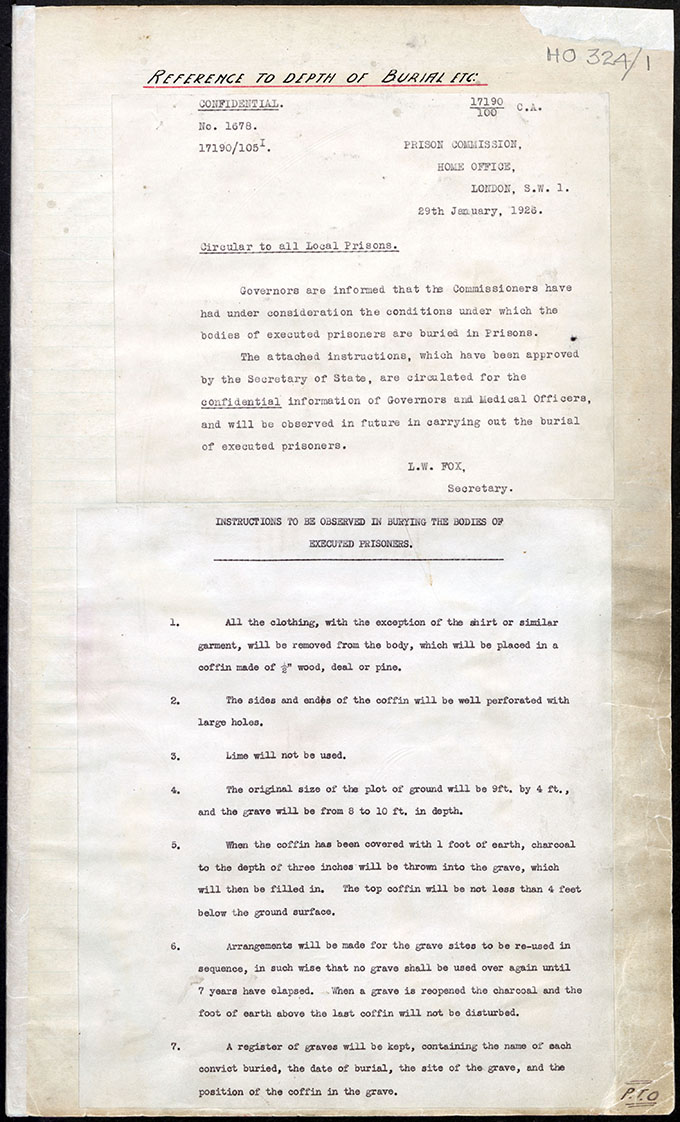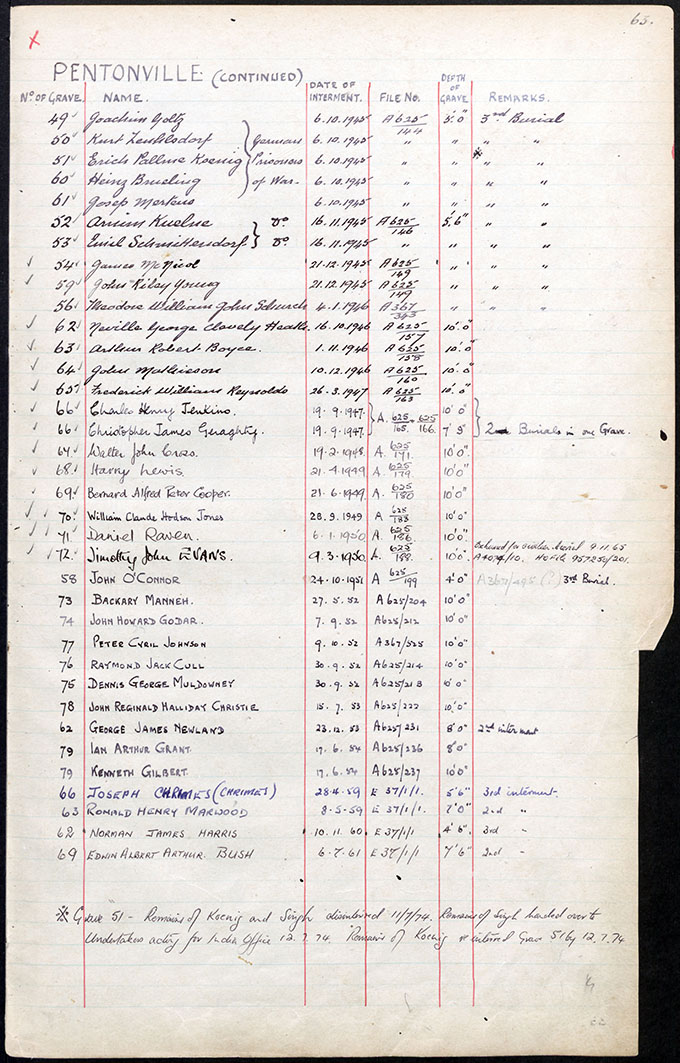It is said that only one tenth of an iceberg is ever visible – that portion above the waterline – and, arguably, its greater and perhaps most impressive part exists quietly beneath the waves, unseen and, just possibly, unappreciated. While in no way comparing The National Archives to a mountain of frozen water bobbing about in the ocean, it is the case that most people that come to visit us to view original documents probably have little idea of the complex, well-oiled machine in operation behind the production of the records they see. Indeed, the simple fact is that behind every document production is a story of logistics, expertise and professional care arising from decades of hard-won experience.
For example, last year The National Archives produced over 500,000 ‘live’ document requests – on-the-day orders for original documents from our readers – and, on average, these were produced in under 38 minutes. As impressive as these statistics are, they tell but half of the story because for each and every production there is also the other side of the picture – namely, the safe return of the document to its home repository, which could be at Kew or at our offsite repositories in Cheshire.
Several years ago The National Archives began to run paid ‘Behind the scenes’ tours for members of the public. Using the iceberg analogy again the tours were designed to allow the public to go, as it were, below the ‘surface’. Whether a seasoned or novice researcher, whether holding a reader’s ticket or not, our tours were purposely meant to allow the public to witness the inner workings of one of the largest and busiest archives in the world.
The initial concept was simple and that was to follow an imaginary document production from a repository and its return, coupled to placing that journey into the context of our primary role as guardians of over 1,000 years of iconic national documents. Our tours proved an instant success and, if anything, the public’s appetite for them has grown – we ran 32 in 2018.
Never complacent, the tours have been honed continually by the feedback we have received, and we now run more tours than ever. Each tour takes 90 minutes – with an hour spent exploring our fascinating building and several of its repositories and key areas, followed by 30-minute private document display. Here I should point out that tours are run in addition to our normal work; as much as we would like to do more we are limited by time in how many we can give.
What do our ‘tourists’, for want of a better term, get for their money? Well for starters our tours are a unique blended learning experience. By this I mean we keep them as interactive as possible and, hopefully, lively and stimulating with a mix of facts, original documents and insights that help the public to better understand what we do and to mentally step into our shoes. Moreover, the relatively small size of each tour – they are usually limited to 14 persons – makes for a more intimate learning experience. Your guide will be a knowledgeable, experienced and enthusiastic member of staff, who will take you on a journey that begins with an explanation of the very beginnings of The National Archives, or the Public Record Office, in 1838 and ends with you viewing some carefully selected original documents that will help illustrate the breadth and depth of a collection that is of national and international significance.

‘Circular to all Local Prisons’, 29th January 1926; catalogue reference: HO 324_1_002
Along the way your guide will reveal key facts and details about The National Archives – like how we exist as a non-ministerial department, and our role as the official archive and publisher for the UK Government, and for England and Wales. Your guide will also explain how we maintain the most appropriate air quality in the repositories, our audit systems to track documents, how our documents are transported between the repositories and reading rooms, the accessioning process, how our collection is a ‘living’ one and how we shuffle and move classes about and much, much, more.
However, we recognise that in the time available on a tour it is impossible to provide a detailed overview of every part of The National Archives but that our visitors are keen to understand as much as possible. To this end your guide will encourage you to ask any questions you wish as we go about the repositories and corridors. What type of questions are we asked? Among the most popular are the following: How big is the collection? What percentage of the collection is available digitally? What is the oldest record we hold? What is the biggest item? What is the most unusual item? How much storage space do we have? All these and more we can answer. Occasionally, however, we get asked a question that can stump even the most experienced guide, but we always endeavour to provide an answer.
As the name suggests, our tours are an active experience and over the course of the 90 minutes you will walk, or rather stroll as the pace is relaxed and not rushed, for about an hour as you step into several repositories and visit the reading room areas that straddle where the public and staff areas meet. There are some stairs and a ramp but if climbing or walking is an issue we do have elevators, and here I should say that all our tours include an escort officer for such situations and help ensure your comfort and safety and that everyone meets up at the next stage of the tour. The relaxed pace is deliberate and enables us time to outline the various departments that make up The National Archives.

List of Pentonville prisoners including Timothy Evans and John Christie: catalogue reference: HO 324_1_004
In addition to the programmed document display, at the end your guide may well show you some of their favourite documents – pieces that have captured their imagination and hopefully yours. Take, for example, ‘Record of Burials All Prisons – Compiled from Prison Records’ (HO 324/1), which is a fascinating example of how documents can have more than one story to tell. On the face of it this is an unassuming administrative Home Office document containing an alphabetical listing of prisons and associated burials giving the names of those interred and dates of internment. The devil, they say, is always in the detail. Obviously every entry is a personal tragedy in itself, but intermixed in the listings are the names of executed prisoners convicted of capital crimes ranging from murder to high treason. A quick flick through the pages soon reveals such infamous names as Ruth Ellis, Derek Bentley and William Joyce – perhaps better known to history as Nazi propagandist Lord Haw Haw.
On a deeper level still there are revealed tragedies within tragedies. Take, for instance, the pages for Pentonville and grave numbers 72 and 78. In the former grave was interred Timothy John Evans and in the latter John Reginald Halliday Christie, on 9 March 1950 and 15 July 1953 respectively. This was an administrative arrangement that surely must have made for some restless spirits in the graveyard, as Evans was falsely convicted and hanged for a murder actually committed by Christie. Just to complete the picture about this fascinating document are three names that are not listed but are very much present – Henry, Thomas and Albert Pierrepoint – who served as official state executioners. In some curious and chilling way the document also serves as their curriculum vitae.
Perhaps you have seen The National Archives featured in television programmes like Who Do You Think You Are? or Long Lost Family, and your interest has been piqued? Perhaps you are just curious about the scope of our collection and have never visited us before? Perhaps what you have read here has interested you sufficiently to know more? We publish the dates of our ‘Behind the scenes’ tours in our What’s On brochure and early booking is advisable to avoid disappointment. Currently the cost is £10 per person.
For more information, contact us at venues@nationalarchives.gov.uk or phone us on 020 8392 5249.

I wouldn’t describe Derek Bentley as infamous but as a victim of the judicial system and there is considerable doubt over his guilt, as there has been since the date of his trial.
Excellent article. I live in the USA and use the Archives or GRO often. I have no clue how my document requests get from my request to my mailbox. Do you have a “virtual” tour that I may participate in? Also, tell the workers at the GRO that they are doing a superb job and are appreciated.